
8-page promo booklet by Nick DeGeorge
After World War II the famous Dallas restaurateur Nick DeGeorge opened his Town & Country restaurant up the street from his earlier Italian place called DeGeorge’s. Nick was so proud of his fancy new digs that he wrote the “Story of Superiority” to highlight every aspect.

A young Nick DeGeorge with his spaghet
Nick’s first restaurant at 1501 Commerce Street was famous for spaghetti and Italian salad, choice ‘KC’ sirloin steaks and large baked Idaho potatoes.
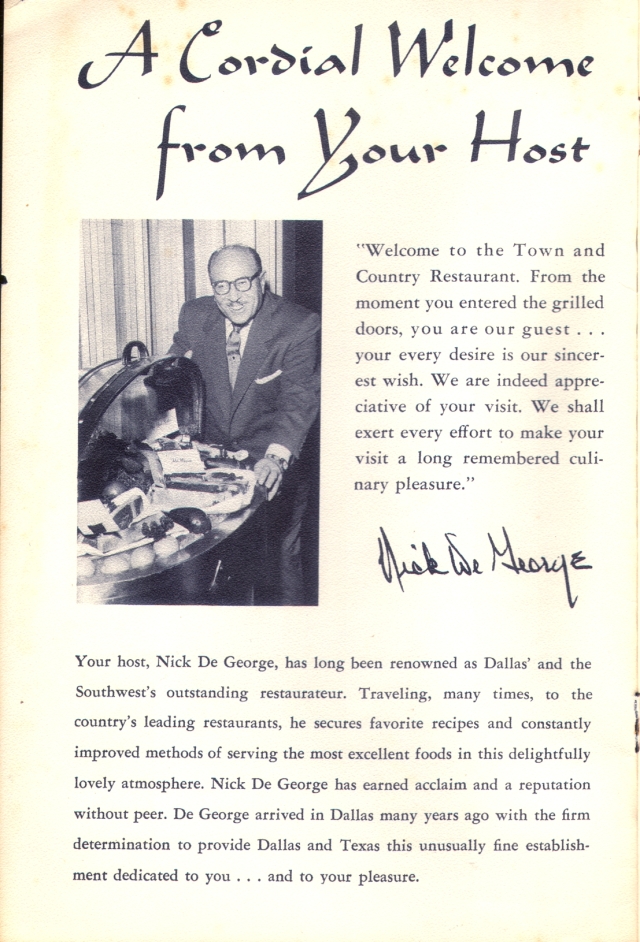
Town & Country's "Story of Superiority" Welcome Page
Nick mentions that he travels to the country’s leading restaurants to secure improved methods of serving food. He doesn’t tell you that he stole the idea for his Rolling Beef Cart from Lawry’s The Prime Rib restaurant in Beverly Hills, California, where the cart was invented.

The Roller Beef Cart at the Town & Country Restaurant
I love these types of continental-style fine dining restaurants that existed everywhere in America but that have mostly vanished in recent decades. Continental cuisine was an eclectic melding of European and American dishes floridly described in elaborate menus. The key elements of a classic fine dining restaurant included white tablecloths, leather or semicircular vinyl booths of red, dark brown or black vinyl, indirect lighting in often-windowless rooms, tuxedoed captains and waiters, and tableside service.
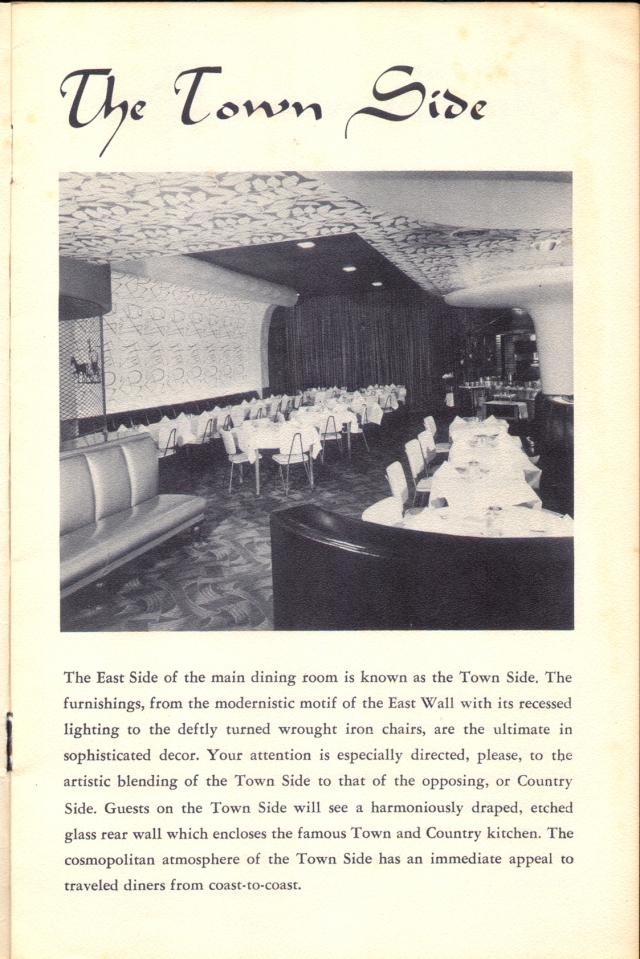
Town & Country's "Story of Superiority" Town Side
Nick describes the ‘Town Side’ of the Town & Country restaurant as having a ‘modernistic motif’ that differed substantially from the restaurant’s ‘Country Side.’ Town & Country was a popular name not only for restaurants but also for motels in the U.S. in the 1950s and 1960s.
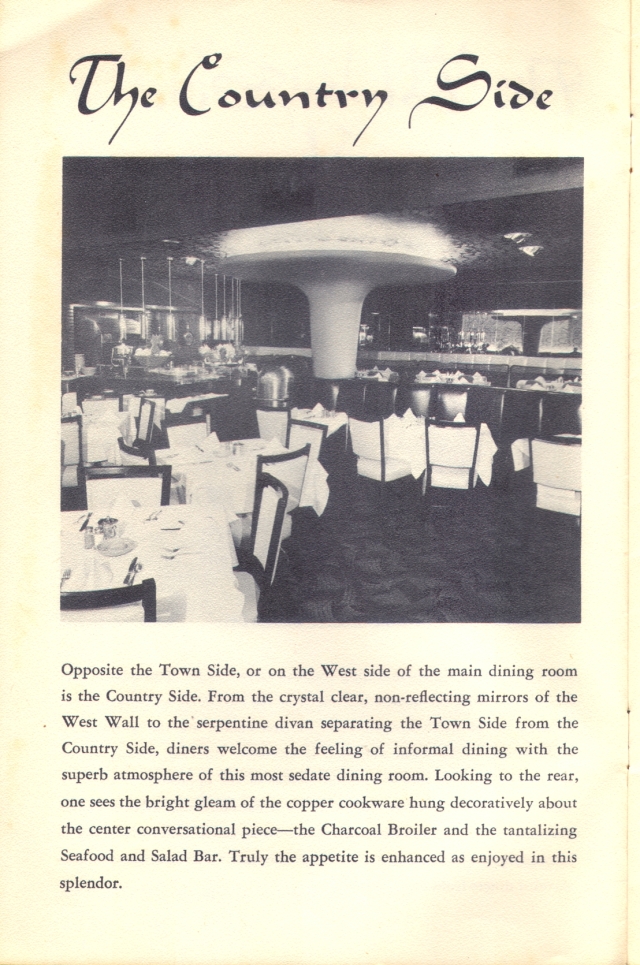
Town & Country Restaurant's "Story of Superiority" The Country Side
Mirrors and a serpentine divan make the Country Side more informal and ‘sedate.’ The Story of Superiority also highlights the Sirloin Room, Seafood and Salad Bar, the Garden Room, the Banquet Room, and the Cocktail Corner. Customers relished Tableside Salad Service where “the dexterity and the ‘Know-How’ of the Salad Chef will intrigue you.” In another blog I’ll write about my obsession with table-side Caesar Salad.
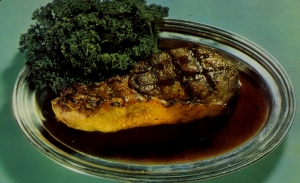
Mmmmm, Sirloin Swimming in its Own Juices
At the Town & Country you could brand your steak with either R for rare, M for medium or W for well done. “Your steak will be served table side with your preference still plainly legible.”

The Sirloin Room at the Town & Country Restaurant
Nick wasn’t bashful with his color scheme. The center of the room was where you’d find an “array of the finest steaks in the meat packing industry.”
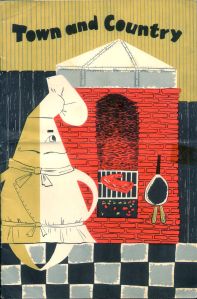
Town & Country souvenir menu
Nick DeGeorge’s Town & Country restaurant was a really big deal in 1950s Dallas. I’m not sure when ol’ St. Nick passed on but I would guess that his restaurant didn’t survive long without him.
As Nick wrote at the end of his booklet, “We pledge ourselves to continue our best efforts to make you, our guest, enjoy every minute of your visit.”
Here’s to Nick DeGeorge and all those like him.


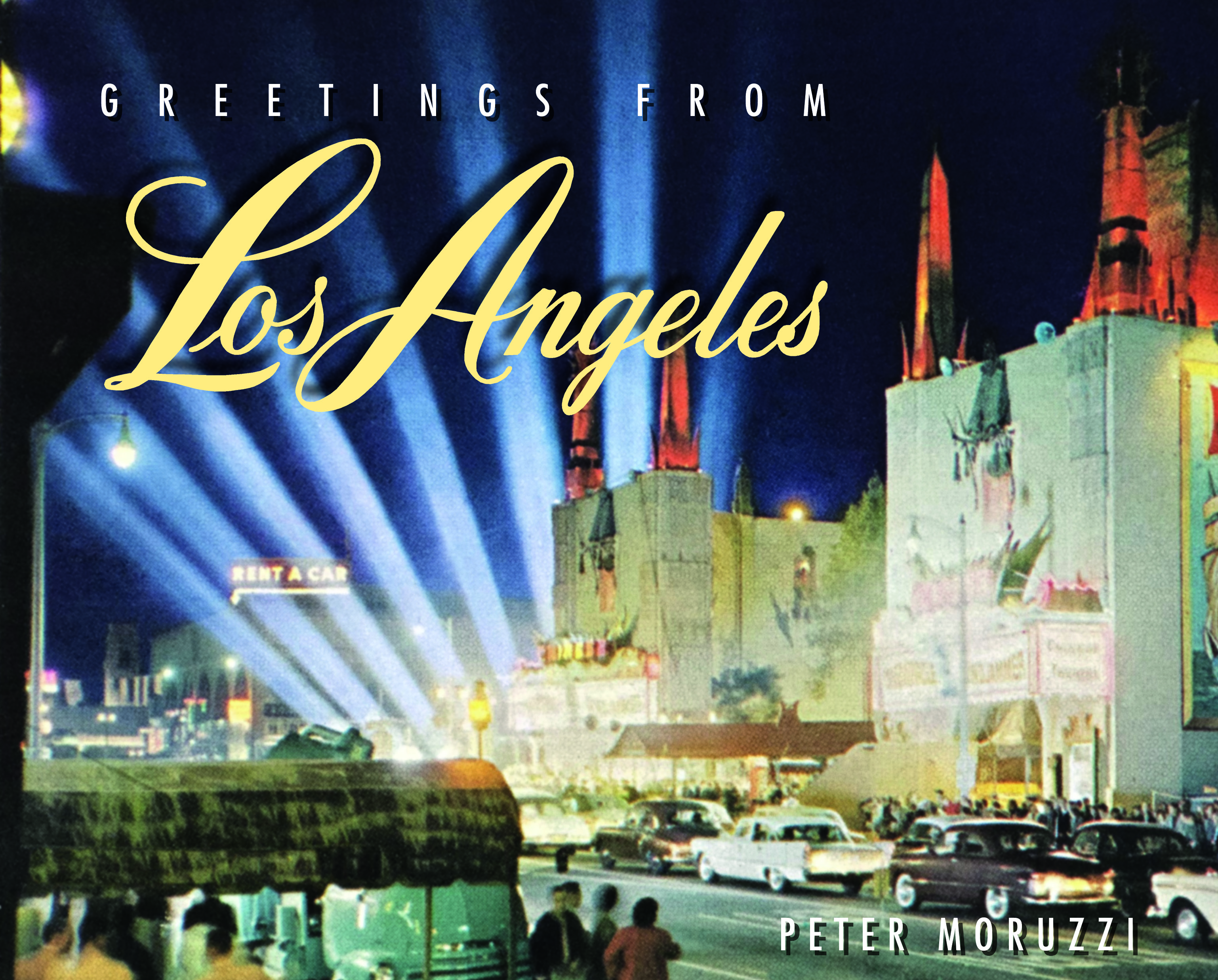


Hello, I’m interested to know if you have any information on the Chinese Room that they had at Town and Country? My grandfather was a chef there for many years. I would absolutely love any information that you might have or guidance on how to find out more. Thank you!
LikeLike
I have the Town & Country “Story of Superiority” booklet but there isn’t any mention of a Chinese Room. There’s the Town Side and the Country Side of the main dining room; the Garden Room; the Banquet Room; the Sirloin Room with its tropical motif; the Cocktail Corner; the Seafood & Salad Bar; and the Roast Beef Cart.
LikeLike
Does the names James Cole ring a bell? He owned Sansones 2000 AD in 1973, Primetimes Speakeasy on Greenville with Nick DeGeorge, Inn of the Tower at Preston Towers in the late 70’s and early 80’s and Mr. C’s Seafood in the West end in the 80’s and early 90’s before retiring with his wife Ruth Cole in Frisco Texas
LikeLike
I have to admit I’m pretty ignorant when it comes to Dallas area restaurant history but I’m eager to learn more. Thanks for the information. I’ll definitely look into these restaurants!
LikeLike
Low lighting and cigarette smoke. That’s the atmosphere that so rarely comes across in interior photos of these places.
I think the two guys are parking valets. But I like your interpretation better.
LikeLike
I’m always amused by the overly-lit photos of the interiors of bars and restaurants taken by professional photographers for promotional purposes, like the color postcard seen here. In real life, no patron ever saw the dining room this clearly, due to a combination of low lighting and ever-present cigarette smoke. In fact if you ever DID see a place like this in glaring lights, you’d be put off by all the scrapes, stains, spills and other unappealing elements that you weren’t aware of before.
In the photo of the Town & Country’s entrance, I am intrigued by the two fellows standing on the sidewalk, apparently gazing at each other. If they’re not parking attendants (which their casual attire suggests they aren’t), what are they up to at this late hour, while the city sleeps? Hmmm?
LikeLike